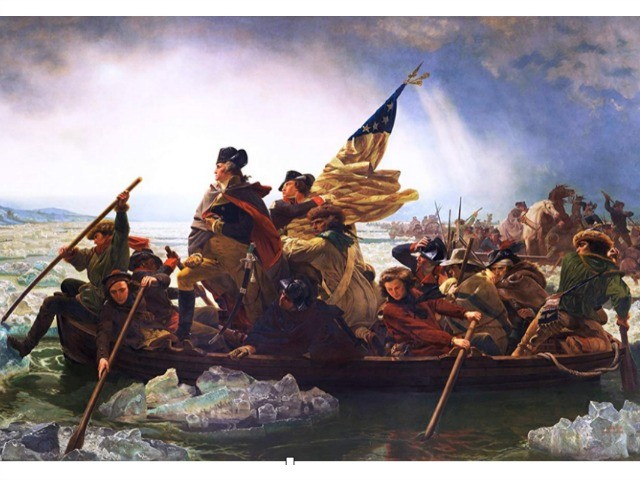One of two surviving editions of the iconic “Washington Crossing the Delaware” painting is expected to command up to $20 million when it goes up for auction at Christie’s in May, according to reports.
The piece, painted by Emanuel Leutze in 1851, is one of three editions the artist created and one of two that survived, Reuters reported. The unmistakable work, which measures roughly three feet by six feet, graced the White House walls for decades before making its exit in 2014 during President Barack Obama’s second term.
“It had been on loan from an anonymous collector before it was sold privately to Mary Burrichter and her husband, Bob Kierlin, founders of the Minnesota Marine Art Museum,” Barron’s magazine reported.
Reuters indicated the painting is expected to sell for $20 million, while Barron’s said it could sell for somewhere between $15-$20 million.
American Art Specialist Paige Kestenman told the outlet the other surviving piece sits in New York’s Metropolitan Museum, while the third piece was destroyed during a bombing raid in Germany during World War II. The painting in the Met is much larger than the edition that will be auctioned at Christie’s, measuring 12.4 feet by 21.25 feet.
The Met painting was completed in 1850 and was displayed at an exhibition in New York City in 1851, where it sold for $10,000, a staggering amount at the time, the Met states.
The smaller surviving painting prominently displays General George Washington leading soldiers in his Continental Army across the icy Delaware River on the evening of December 25, 1776. Washington and his reeling forces were in a dire position at this point in the American Revolution.
The Continental Army had recently lost two Garrisons on the New Jersey and New York border that overlooked the Hudson River, and British forces were driving American forces into New Jersey, Brittanica noted.
“Although Washington was able to escape to Pennsylvania on the west bank of the Delaware River, his army had been badly beaten,” according to the website.
After learning that Hessian forces in Trenton, New Jersey, were basically unsupported, Washington set out to capture them. He initially intended to cross the Delaware River with three battalions. One was to consist of 1,800 men led by Col. John Cadwalader, who was tasked with attacking a British garrison in Burlington, south of Trenton, to stymie British forces from aiding the Hessians, Britannica said. Another was a group of 1,000 men headed by Brig. Gen. James Ewing, who was to take a bridge that would almost certainly be the Hessians’ escape route. Finally, Washington would command the final unit of 2,400 soldiers who would launch an attack on the Trenton garrison.
Washington and his men were the only force to make it across the ice-filled Delaware River during a Nor’easter, thanks to Col. John Glover and his 14th Continental Marblehead regiment. They maneuvered the boats through the water with great skill, according to Britannica. They reached the New Jersey shores at around 4:00 a.m. and proceeded to march south to Trenton after Washington divvied up his command.
“One column, under Maj. Gen. John Sullivan, would approach Trenton from the west, while the second, under Maj. Gen. Nathanael Greene, would attack from the north,” Britannica notes.
Per the website:
Washington’s two columns arrived on the outskirts of Trenton about 8:00 AM, and their audacious attack took the garrison completely by surprise. Knox’s guns poured shot into the avenues surrounding the barracks, while Washington’s infantry engaged the disconcerted Hessians in close-quarters combat.
Hessian Col. Johann Rall ordered his men to a fighting retreat before being killed. The Hessians subsequently laid down their arms, and the Continental Army took 900 prisoners and a significant amount of ammunition and weapons without losing a single soldier, according to Brittanica. Some 20 Hessians were killed, and 80 were wounded. Just five Americans were injured, most severely being an 18-year-old Lieutenant named James Monroe, who suffered a shoulder wound that almost proved to be fatal. The young lieutenant recovered and later became the fifth president of the United States of America, which he shed blood to help realize.
Washington then led his men back over the river and into Pennsylvania.


COMMENTS
Please let us know if you're having issues with commenting.